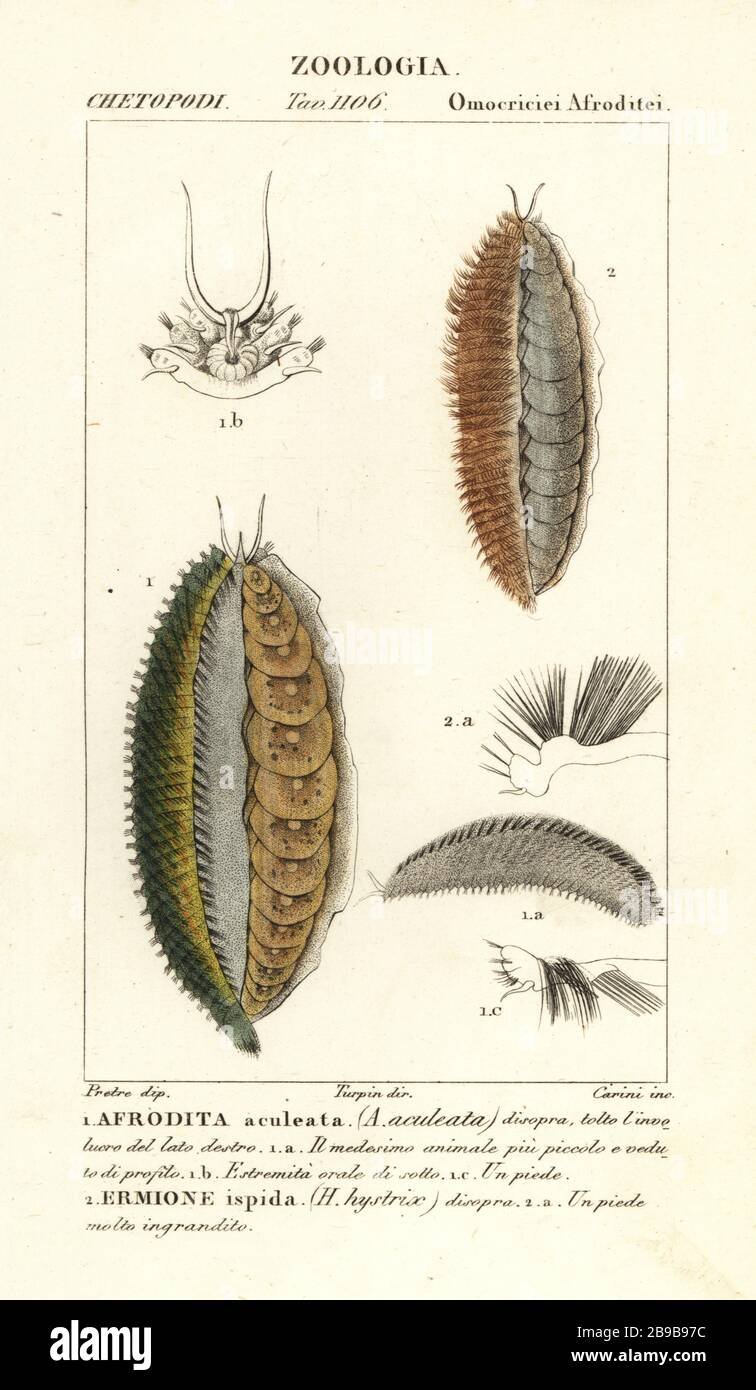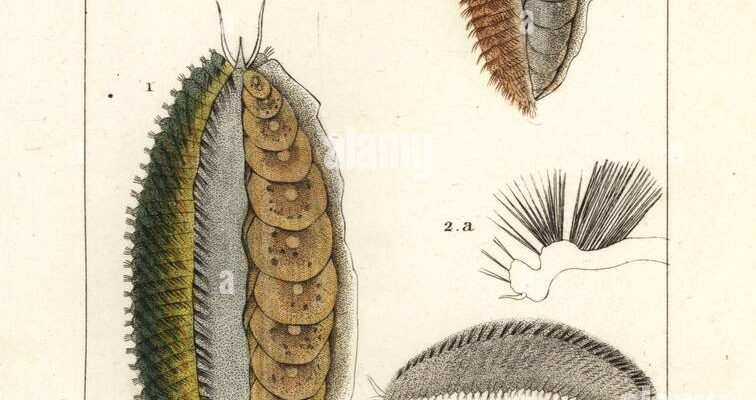
These fascinating critters are part of the annelid family—yes, that includes earthworms! But before you roll your eyes, let me assure you: there’s a whole world of wonder here. Imagine a tiny, fuzzy creature that glitters and shines in the water, reflecting the colors of its surroundings. This isn’t just another boring fact; it’s a story of survival, adaptation, and the natural beauty found in our oceans.
Understanding the Sea Mouse: What Makes It Unique?
The Aphrodite Aculeata stands out for several reasons. First off, its appearance is truly one-of-a-kind. This marine worm can grow up to about 10 inches long and is covered in tiny, bristly setae (which are like little hairs). These setae aren’t just for show; they serve multiple purposes. They help the sea mouse navigate through the sediment at the ocean floor, almost like a pair of fuzzy socks gripping the ground.
Color-wise, the Aphrodite Aculeata is a real stunner. The body is often a blend of browns and greens, which helps it blend in with its surroundings. However, when light hits it just right, it can shimmer with hints of blues and purples, making it a visual delight. Honestly, if you came across one in the wild, you might think it’s a piece of underwater art.
Habitat and Distribution
You might be wondering where to find these colorful critters. The Aphrodite Aculeata primarily resides in the North Atlantic and Mediterranean Sea. They tend to make their home in sandy or muddy sea beds, burrowing into the substrate where they can hide from predators. Think of it like a cozy burrow for this little sea creature, offering safety and a buffet of food options.
The sea mouse shows a preference for shallow waters, typically around 30 to 300 meters deep. This habitat choice allows them access to plenty of organic material to munch on, such as dead plant and animal matter. Essentially, they’re nature’s clean-up crew, playing a vital role in the ecosystem.
Diet and Feeding Habits
Let’s talk about what the Aphrodite Aculeata eats. These sea mice are scavengers, meaning they look for food rather than hunt it down. They feed on detritus, which is just a fancy word for decomposing organic material. This can include tiny bits of dead organisms, plant matter, and other yummy treats that float down to the ocean floor.
Here’s the thing: their unique feeding style allows them to thrive in environments that aren’t always rich in nutrients. By consuming decaying matter, they help recycle nutrients back into the ecosystem. Picture them as little vacuum cleaners of the ocean, cleaning up and providing essential nutrients for other creatures.
How They Move
You might wonder how the Aphrodite Aculeata gets around. Well, they’re not exactly speed demons, but they have their own charm. They use their bristles and parapodia (side extensions on their body) to wiggle and glide along the ocean floor. It’s a bit like watching a small bus travel on a bumpy road—back and forth, they go.
When threatened, these little creatures can also burrow quickly into the sand. This allows them to escape from predators, making them quite resourceful. Imagine trying to avoid a sneeze in a quiet room; that’s the level of stealth they exhibit when faced with danger.
Reproduction and Life Cycle
The reproductive habits of the Aphrodite Aculeata are equally interesting. They’re known to be hermaphroditic, meaning each individual possesses both male and female reproductive organs. When the time is right, they’ll exchange sperm with another sea mouse to fertilize their eggs. After mating, a female can produce hundreds of eggs, which later hatch into tiny larvae.
These larvae are free-swimming at first, giving them a chance to disperse before settling on the sea floor. It’s a bit like sending kids off to summer camp—some will thrive, while others will find it tougher. The larvae eventually settle down, forming their own cozy homes, much like their parents.
Predators and Survival Strategies
Like many creatures in the ocean, the Aphrodite Aculeata has its share of natural predators. Fish, crabs, and other marine animals might see these sea mice as a tasty snack. To evade these threats, they rely on their camouflage. Their color and texture help them blend into the sandy or muddy ocean floor, making them less noticeable to eager predators.
In addition to this, their ability to burrow quickly offers a secondary line of defense. They can wiggle into the safety of the sediment, where larger fish or hungry crabs can’t reach them. It’s all about survival of the fittest in the underwater world.
Importance in the Ecosystem
The Aphrodite Aculeata plays a surprisingly pivotal role in its ecosystem. Beyond just being a scavenger, it contributes to nutrient cycling. As it feeds on decomposing matter, it helps break down these materials into smaller pieces that are easier for other organisms to use.
Moreover, by serving as prey for various marine animals, the sea mouse supports the food web. It’s a small but significant cog in the great machine of ocean life. Without creatures like the sea mouse, the balance of marine ecosystems could be disrupted, leading to a ripple effect that could impact larger species, including humans.
So, there you have it—the Aphrodite Aculeata, or sea mouse, is more than just a quirky name. It’s a fascinating creature that encapsulates the wonders of ocean life. From its unique appearance and scavenging diet to its critical role in the ecosystem, this little marine worm has a lot to offer. Next time you’re at the beach or snorkeling, remember the tiny heroes living beneath the waves, cleaning up the ocean floor and thriving in their hidden homes.
Whether you’re a seasoned naturalist or just curious about ocean life, the sea mouse is a testament to the richness and diversity of life under the sea. With each wave crashing on the shore, there’s a world waiting to be discovered—a world where even the smallest creatures play big roles in the grand story of nature.

